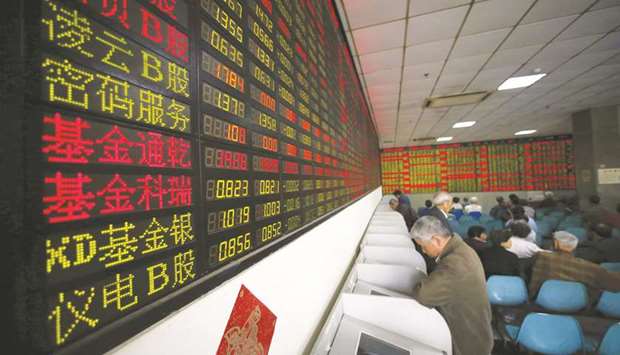China funds filled the top five places in a league table of emerging equity funds based on Lipper performance data, and India strategies took the other slots in the top 10.
It was a turnaround from the end of 2016, when Asia funds brought up the bottom of the rankings which were led by Russia- and Brazil-focused funds.
Russia funds are this year’s worst performers.
Emerging equities rose over 17% in the first half of the year, attracting net inflows of $42.3bn, according to EPFR Global.
They had suffered outflows of $7.4bn in the first six months of 2016.
On average, global emerging equity funds tracked by Lipper delivered returns of 14.8%, versus 6.56% in the first half of 2016.
Chinese stocks gained almost 5% in June after MSCI’s decision to include mainland A-shares in its emerging equity index fuelled a buying spree.
But Greg Kuhnert, manager of the Investec GSF All China Equity fund, which topped the equity table with a return of over 35%, said the announcement was not really a factor in his outperformance.
Instead he cited overweights in consumer discretionary and tech stocks such as Geely Automobile Holdings and Sunny Optical, which makes lenses for smart phone cameras.
Kuhnert was “cautiously optimistic” for the second half despite China’s debt burden, which he said the government was addressing: “Investors have been climbing a wall of worry on these issues for a very long time and valuations are cheap while earnings are recovering.”
Brijesh Ved, lead adviser to Parvest Equity India, which came sixth, also highlighted an expected earnings recovery in the second half, helped by the government’s focus on infrastructure projects. Indian stocks have surged to record highs this year, bouncing back from 2016’s demonetisation-led correction.
Ved said other reforms such as the Goods and Services Tax should also ultimately benefit listed companies, notwithstanding the potential for short-term disruption.
On the emerging debt side, local currency bond funds took nine of the top 10 places after the US dollar fell almost 7% in the first half.
“The US dollar peaked in December 2016 approximately a month after (Donald) Trump was elected president.
Since then (it) has sold off versus most developed and emerging currencies,” said Federico Garcia Zamora, manager of the BNY Mellon EM Debt Local Currency Fund. Garcia Zamora’s fund topped the Lipper table, returning 11%, compared with an average fund performance of 5.96%. He has taken profits on some positions, reallocating to countries that lagged the emerging debt recovery.
This meant cutting exposure to Russia and Brazil and adding South Africa, Turkey and the Czech Republic, he said. The only hard currency fund to make it into the top 10 was Vontobel’s Emerging Markets Debt fund which tied for second place, returning 10.7%. Manager Luc D’hooge said he had taken advantage of cheap valuations in Argentine and Mexican debt.
“There were a lot of fears in the market at the end of last year and that created very nice opportunities,” D’hooge said, citing worries about hefty bond sales from Argentina and US protectionist measures against Mexico.
“Mexico is still a very good credit — they have risks with the US, but the bonds sold off to levels that were ridiculous.” Emerging debt funds received net inflows of $43.9bn in first six months of the year, according to EPFR Global.
D’hooge said finding attractive opportunities was now more difficult than a year ago, when valuations were “screamingly cheap”.
Emerging economies’ growth premium over developed peers is widening, tempting back investors after years of negative news: “That is driving flows and we are not at the end yet,” he said.

